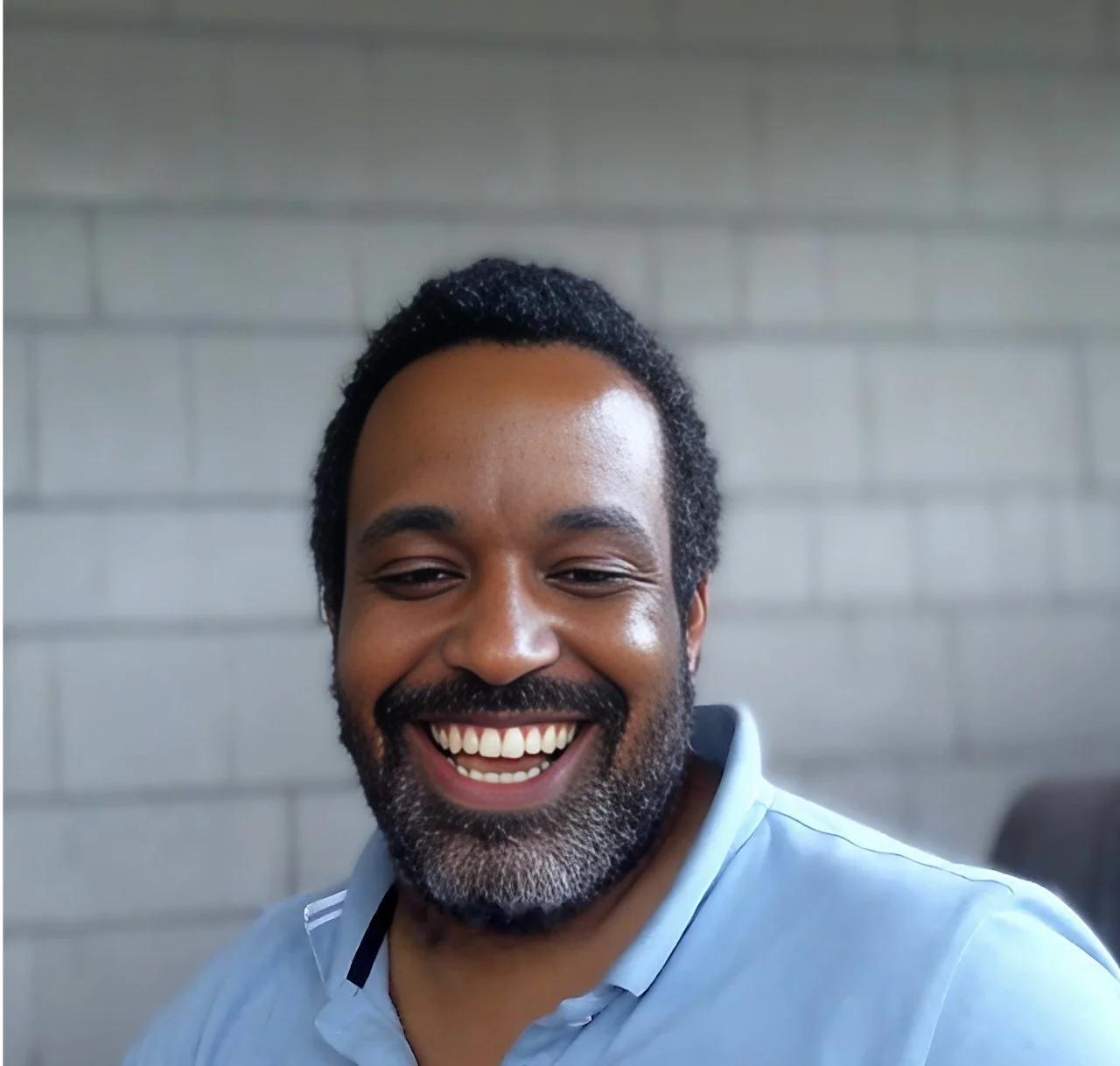Integrating Systems Thinking and Awareness Practices With Luminous Leadership
At its essence, awareness-based systems change is a powerful synthesis of two domains that are often perceived as separate - the outer world of objective systems structures and dynamics, and the inner realm of subjective mindsets, assumptions, and ways of being.
Systems thinking is a holistic approach to understanding the interconnected elements and relationships that shape the behavior of a system over time. It involves tools like causal loop diagrams, stock-and-flow models, and leverage point analysis to map out the complex web of feedback loops, time delays, and unintended consequences that often underlie intractable organizational and societal problems.
Pick Up Your Complimentary Copy of “Luminous Leadership”
While incredibly illuminating, systems mapping alone is insufficient to shift the deep source conditions that give rise to problematic patterns. That's because the mental models, blind spots, and inner states of the actors within the system often perpetuate entrenched behaviors, even when structural changes are made.
This is where awareness-based practices come in. Disciplines such as meditation, dialogue, and embodiment help individuals and groups cultivate the self-awareness to examine their ingrained beliefs, the empathy to see the system through the eyes of diverse stakeholders, and the creative orientation to sense emergent future possibilities.
By integrating these twin powers - the penetrating discernment of systems thinking and the perceptual depth of awareness practices - change agents can develop the capacity to not just analyze, but sense and shift the underlying forces that shape our world. They gain access to what Otto Scharmer, a pioneer in this field, calls the "blind spot" - the inner place from which we operate when we act, decide, and create.
The Promise of Shifting Consciousness
The core premise of awareness-based systems change is that the quality of results produced by any system depends on the quality of awareness from which people in the system operate. In other words, the system is a function of the consciousness of the actors within it.
This means that transforming a system necessarily involves transforming consciousness - at the individual, collective, and societal levels. It's about expanding and elevating the capacity to sense and shape emerging futures that are more just, sustainable, and fulfilling.
On an individual level, this involves practices of personal mastery - cultivating the self-awareness to examine one's thoughts, emotions, and behaviors with honesty and compassion; the empathy to see reality through the eyes of others; and the creative imagination to envision new possibilities. It's about developing the humility to let go of ego attachments, the courage to venture into the unknown, and the resilience to bounce back from failures.
At a collective level, shifting consciousness means nurturing generative "we-spaces" - environments of trust, authenticity, and shared aspiration where diverse individuals can let down their guard, explore different perspectives, and tap into the group's collective intelligence. It's about developing the capacity for genuine dialogue, co-sensing the larger system, and co-creating prototype solutions.
On a societal level, transforming consciousness involves shifting the dominant narratives, metaphors, and memes that shape cultural meaning-making. It's about daring to question the taken-for-granted logics of extraction, domination, and scarcity - and offering life-affirming alternatives of regeneration, partnership, and shared abundance. It means cultivating distributed leadership networks committed to system-wide healing and evolution.
Ultimately, the invitation is to become vehicles for the deeper wisdom of life itself to guide our civilizational renewal. It's to attune to what wants to be born - the emerging future possibilities that are tugging at our hearts and minds - and to commit to midwifing their manifestation with humility, discernment, and fierce compassion.
The U-Process: A Social Technology for Transformation
Awareness-based systems change is more than just a set of principles - it's an evolving suite of practices and methodologies for putting those principles into action. One of the most widely used frameworks is Theory U, developed by action researchers at MIT and practiced by change leaders around the world.
The U-Process is a social technology for groups to move through three essential movements:
Sensing the current reality with fresh eyes by suspending habitual ways of seeing.
Presencing our highest future potential by connecting to the source of our deepest knowing and commitment.
Realizing concrete prototypes and practices that embody the new.
In the first phase, co-initiating, a diverse group of stakeholders comes together around a shared purpose and commitment to collaborative inquiry. They articulate questions that matter - not just analytically interesting puzzles, but issues that tug at the heart with fierce urgency.
The group then moves into co-sensing - immersing in the systemic context through deep-dive learning journeys, stakeholder interviews, and site visits to the places that most vividly express the current reality. By suspending judgment and opening the mind, heart, and will, participants begin to see the system through the eyes of others and sense their own role in enacting patterns.
Presencing follows - retreating and reflecting to connect to the deepest sources of knowing and inspiration. Through contemplative practices like meditation, journaling, and nature walks, individuals drop into a state of open attention where novel insights and intuitions can arise. At the collective level, practices like Social Presencing Theater and 4D mapping help the group access its dormant wisdom.
The latter phases involve co-creating and co-evolving - building living examples of the new through rapid-cycle prototyping initiatives, and embedding the most promising solutions in the larger ecosystem through practices and infrastructures that support scaling and continuous innovation.
Throughout this process, participants are invited into both inner and outer transformation - to be in learning mode, challenging limiting beliefs, and "acting in an instant" based on expanded awareness. They start to experience the subtle ways in which their quality of attention and intention affects the generativity of their actions.
Over time, groups develop the capacity to operate from a place of "presencing" - sensing and actualizing emerging future opportunities in real-time. They learn to attune to the ways life is seeking to evolve through them for the benefit of the whole.
Cultivating Systemic Leadership Capacities
At the heart of awareness-based systems change is the development of enhanced leadership capacities to sense and actualize emerging future possibilities. These include suspension, redirection, letting-go, letting-come, crystallization, and embodiment.
Suspension involves the ability to dis-identify from one's habitual ways of seeing and operating. It's the capacity to step back and observe one's own thought processes, emotions, and impulses - as if from the balcony. This allows leaders to break free from reactive patterns and more consciously choose how to respond to challenges.
Redirection is the ability to pivot attention from surface symptoms to root causes, and from external obstacles to internal constraining beliefs. It involves inquiring into not just what is happening, but the interior reasons why. Deeper insight into the source of problems often sparks unexpected paths forward.
Letting-go means consciously releasing identifications that no longer serve - outdated self-images, attachments to particular outcomes, or fears of failure. It's the willingness to relinquish control and step into the fertile void of not-knowing. This takes immense courage, but creates space for genuine innovation to arise.
In that space, the capacity for letting-come can emerge - the ability to sense and receive the impulse of emerging future possibilities. This often comes as a subtle felt sense in the body, a seed of inspiration that begins to gestate. The key is to resist immediately jumping into action, and instead patiently incubate the delicate seed.
As clarity and commitment coalesce, the capacity for crystallization arises - the ability to distill the core essence of an insight into a concrete vision, initiative, or prototype. This is where the rubber meets the road - translating lofty ideals into practical, testable solutions in real-world contexts.
Finally, embodiment is the capacity to walk the change, not just talk it. It's the willingness to be a courageous stand for a new way of being and doing, even in the face of resistance or setbacks. Embodiment builds credibility, attracts allies, and begins to shift the field.
As groups engage in ongoing cycles of awareness-based action and reflection, these capacities start to become more than just skills - they become internalized ways of being that express naturally through wise, compassionate, and timely deeds. Leaders develop the resilience to embrace uncertainty and emergence, grounding in an unwavering sense of purpose.
The ultimate aim is to forge an embodied, co-creative partnership with the evolutionary impulse itself - to become more graceful instruments for the manifestation of the greater good of the whole. This goes far beyond leadership as a set of techniques, to leadership as a sacred vocation of service.
Orchestrating Change Initiatives
Putting awareness-based systems change into practice involves a delicate orchestration of multiple methodologies, settings, and scales. It requires a nuanced reading of the unique needs and opportunities within each context, as well as the choreography of different spaces and processes over time.
On the ground, change initiatives often begin with the establishment of a core team that serves as a microcosm of the larger system. Ideally composed of individuals who represent key stakeholder perspectives, this team comes together in a committed learning journey to build the personal, interpersonal, and systemic capacities to steward transformation.
Through a series of retreats, learning journeys, and action experiments, the team starts to develop a shared sensing organ to perceive the system in new ways. They surface honest assessments of current reality, appreciative stories of "positive deviance," and bold aspirations for the future. In a spirit of action research, they launch prototype initiatives to translate insights into small-scale solutions.
As momentum and confidence grow, the core team often convenes larger-scale summits or conferences to engage the wider ecosystem of stakeholders. Using generative dialogue formats, graphic facilitation, and presencing practices, these gatherings help to forge shared understanding, deepen relational trust, and unleash collective creativity. Larger groups get a visceral taste of a different quality of interaction.
Successful prototypes are then resourced and connected into learning communities or action networks, attracting new partners and propagating solutions across contexts. Volunteer task forces take the lead on spreading new practices and facilitating the cross-pollination of ideas. Stories of breakthrough are widely shared to spark inspiration and adoption.
In more mature systems change efforts, the initial core team evolves into a backbone support function - holding the higher purpose, tending to the overall health of the collaboration, and ensuring regular reflection and realignment. They help to weave the scaling process with other reinforcing shifts in areas like policy, technology, and the funding landscape.
Throughout the journey, change leaders must tend to both the visible, measurable results and the more intangible shifts in the interior condition of stakeholders. They track traditional metrics while also honoring the subtle ways that culture, trust, and collective meaning-making evolve over time. Balancing intuitive leaps of faith with disciplined management of complexity is an ever-evolving art.
At its best, this artistry fosters an expanding sense of what is possible - for individuals to show up with more authenticity and care, for organizations to embody their highest purpose, and for whole systems to function with agility, equity, and thrivability. The transformation of consciousness becomes the transformation of behavior becomes the transformation of cultures and institutions.
Becoming Systems Acupuncturists
As change leaders deepen their inner-outer systems awareness, they start to intuit the vital energy flows within organizations and societies. Like skilled acupuncturists, they can sense the blockages and imbalances that inhibit the health of the whole, and design minimally invasive interventions to restore integral circulation.
This level of mastery involves becoming a supple instrument for the deeper wisdom of the system to guide right action. It means cultivating the "negative capability" to dwell in uncertainty without grasping for quick fixes. It requires the humility to hold one's mental models lightly, the empathy to bear witness to others' truths, and the intuition to sense the adjacent possible.
In practical terms, systems acupuncturists develop the capacity to:
Perceive systemic patterns and institutional archetypes that repeat across contexts
Convene strategic conversations that shift entrenched dynamics and spark collective will
Presence the positive future that wants to emerge and enroll stakeholders in making it real
Prototype high-leverage initiatives that shift interlocking feedback loops over time
Foster vertical development and build regenerative cultures that bring out the best of people
Engage the arts, embodied practices, and nature immersion to unleash collective creativity
Underlying these skills is a fundamental identity shift from change agent to systems midwife - from outside fixer to sacred servant of life's evolutionary drive. That shift is marked by a profound surrendering into co-creative partnership with the Mystery; a willingness to be danced by the music of an emerging future that remains forever beyond full comprehension.
The ultimate aim is not to drive change through force of will, but to humbly open to the deeper movements that are already underway - and to become elegant vehicles for their conscious unfolding in service of the greater good. This is the path of regenerative leadership, of building the capacity to be in right relationship with self, others, and the whole of life.
An Invitation into Evolutionary Leadership
In this time of profound disruption, we are being called to evolve - not just our strategies and structures, but the very source condition from which we operate. The converging crises of our moment are, in essence, a crisis of consciousness - a startling reflection of the interior landscapes of separation, scarcity, and domination that have long ruled human affairs.
The path of awareness-based systems change offers an antidote to these deep-seated patterns - a way to reweave the broken feedback loops between the personal, interpersonal, and systemic realms of transformation. By integrating systems thinking with the wisdom of contemplative traditions, it invites us to midwife a world that embodies the higher angels of our nature.
Of course, this is no easy task. The journey of becoming an evolutionary leader is one of great joy and great struggle, profound fulfillment and profound loneliness. It demands nothing less than the radical re-orientation of our lives in devotion to the thriving of the whole - even and especially when that rubs against the grain of mainstream society.
But for those who feel the call to serve something greater than ourselves, to be midwives for the transition our world so desperately needs, there is no greater privilege or adventure. It is the ultimate gift to participate, consciously and compassionately, in the unfolding story of our collective awakening - and to plant the seeds for a more just, sustainable, and regenerative future for all.
The path is uncertain, but the horizon is luminous. And we are all needed to tend the soil, till the earth, and nurture the garden of the world our hearts know is possible. Let us begin exactly where we are, with the radical humility to open to life's guidance at every step - and with the unflinching commitment to keep walking, one bare foot in front of the other, until all beings everywhere are free.
Illuminate Your Leadership Potential: A 9-Month Transformational Journey
Are you ready to transcend traditional leadership and become a true catalyst of organizational transformation? Our exclusive 9-Month Luminous Leadership Mentorship is more than a program—it's a profound personal and professional metamorphosis.
What Makes This Mentorship Unique?
Beyond Skill Development: This is a deep dive into your leadership essence. We don't just teach leadership techniques; we illuminate your innate capacity to inspire, transform, and create meaningful change.
Holistic Transformation: Over nine transformative months, you'll:
Uncover your authentic leadership voice
Develop extraordinary emotional intelligence
Learn to create regenerative organizational cultures
Master the art of systemic thinking
Cultivate a presence that naturally draws forth potential in others
Personalized Guidance: Limited cohort size ensures intimate, tailored mentorship. You'll receive:
Monthly one-on-one deep-dive sessions
Quarterly immersive leadership retreats
Continuous personalized coaching
Access to our exclusive leadership community
Who This Is For:
Visionary executives seeking deeper impact
Emerging leaders ready to redefine organizational potential
Social entrepreneurs transforming complex systems
Conscious professionals committed to holistic growth
Investment in Transformation: This is not just a mentorship—it's an investment in your most profound leadership potential. Limited spots available to ensure maximum individual attention and collective synergy.
Your Invitation
Leadership is not a title. It's a continuous journey of awakening, connection, and profound human potential.
Are you ready to illuminate your leadership?












